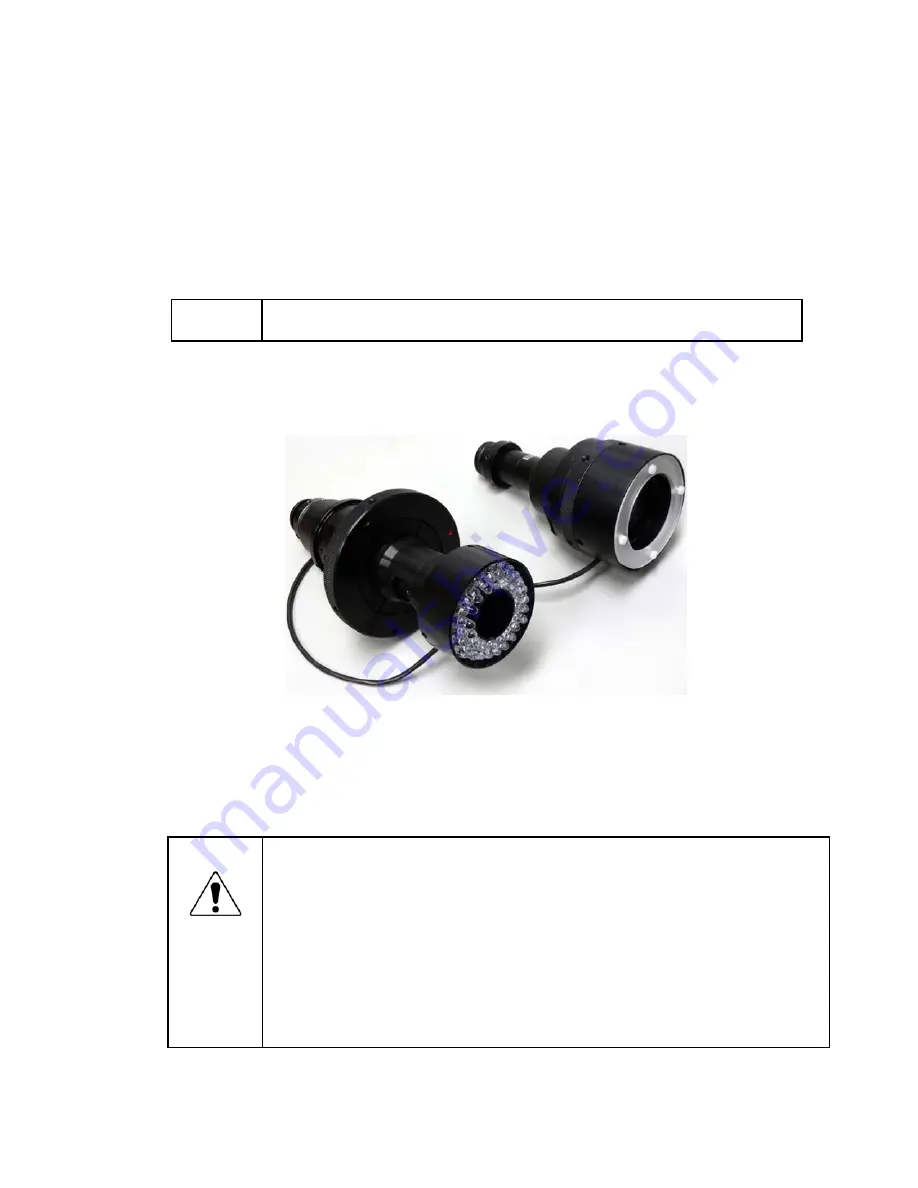
- 14 -
If the system is to be operated under environmental conditions that are substantially different
from those shown above, the system should be recalibrated under the expected conditions.
Also consider material characteristics, such as coefficients of thermal expansion of the parts
under inspection. Numerical compensation may be required when measuring parts under
conditions different from those controlling the stated dimensional specifications for these parts.
2.4 Changing Bayonet Mounted Optics
AV systems equipped with a bayonet optics mount allow their optics assemblies to be changed
quickly by the user, for example to switch from zoom operation to fixed-magnification telecentric
measurements, or to switch between telecentric lenses with different magnifications.
NOTE
T
he positioning of different optics assemblies in the bayonet mount is not
exact. Do not change optics in the middle of a measurement run.
An LED quad ring light is normally part of the 6.5:1 zoom optics assembly and should always
remain attached to that assembly. Different LED ring lights fit all telecentric lens assemblies from
0.3X to 4.0X. This ring light can be transferred from one telecentric lens to another when these
have been removed from the system.
6.5:1 zoom optics assembly (left), telecentric optics assembly (right)
To remove a lens assembly from the system, first detach the electrical connections of the ring
light. Note that the electrical connectors are latched. Pull and twist the two halves of the plastic
connector halves to separate them. Give the optical assembly a quarter turn counterclockwise,
and the assembly will suddenly be released. Reverse the process to reinstall.
Cautions
Use two hands to remove a lens assembly, as it is heavy and is suddenly released
after giving it a quarter turn counterclockwise. A drop onto the stage glass could
break the lens and the stage glass, causing extensive damage.
Do not leave the camera unprotected by a lens assembly to minimize dust settling
on the CCD sensor surface.
Do not touch optical surfaces, since oil from your hands can permanently
damage optical coatings.
Place unused lens assemblies in a polyethylene Ziploc bag for dirt protection.
Store unused lens assemblies in a safe place, since they are breakable and
expensive.















































